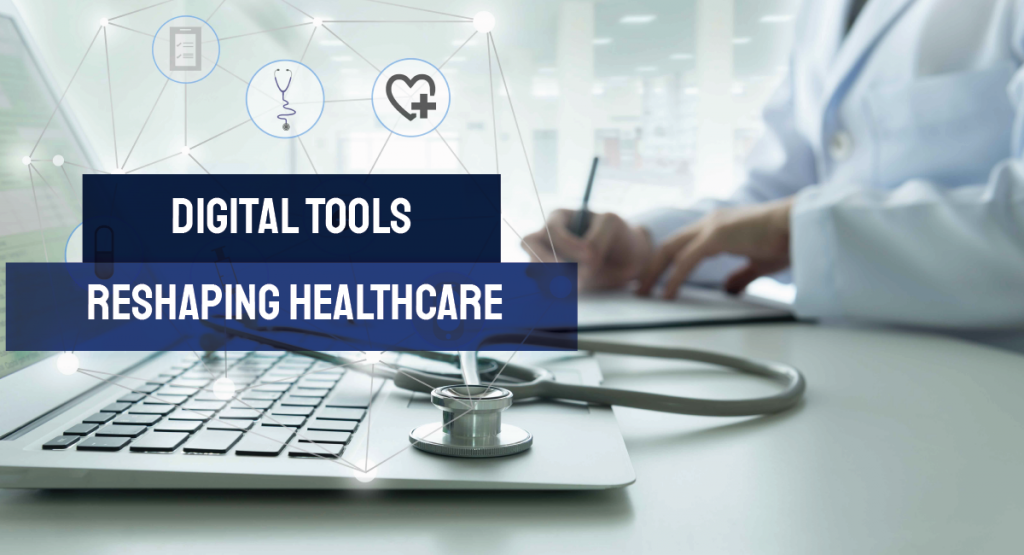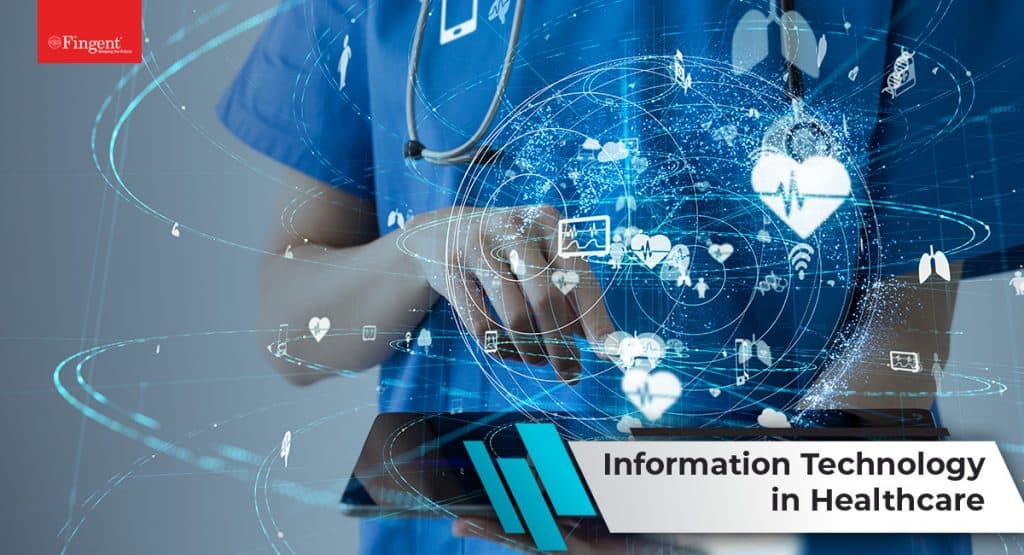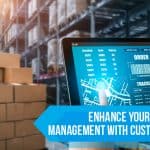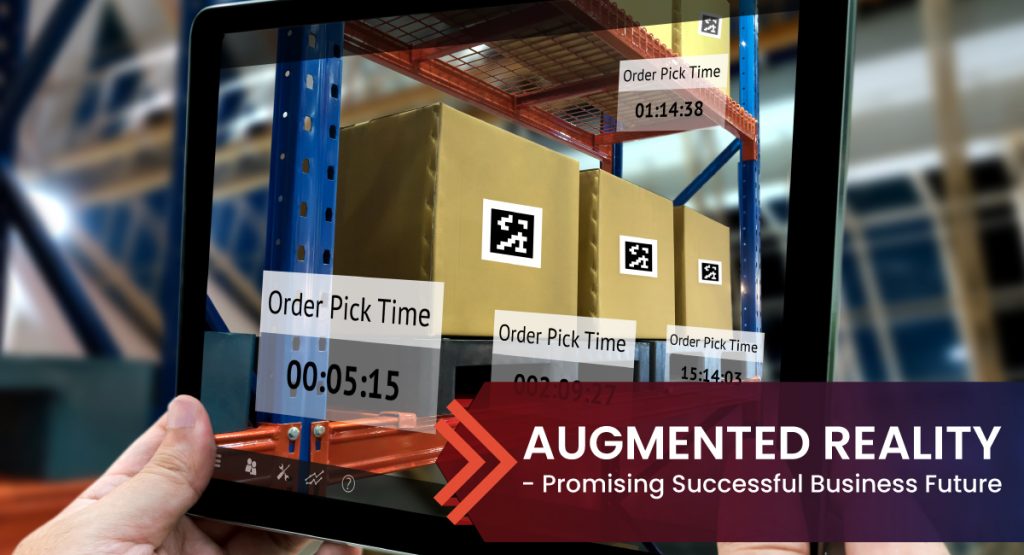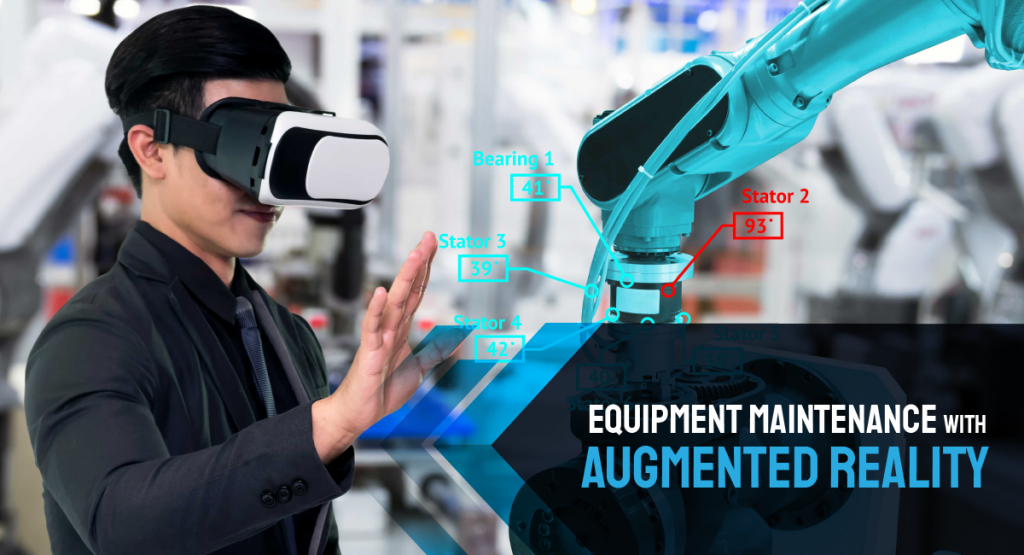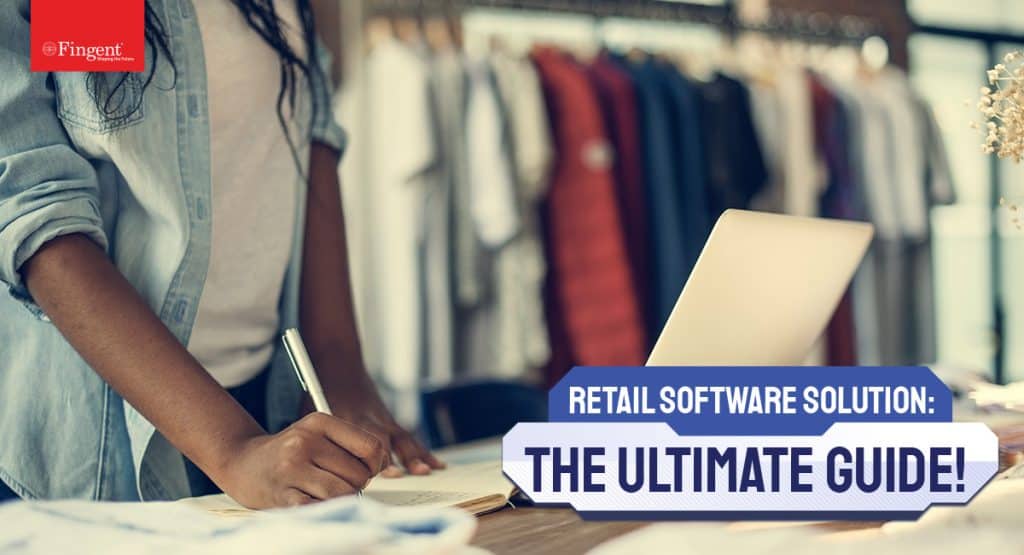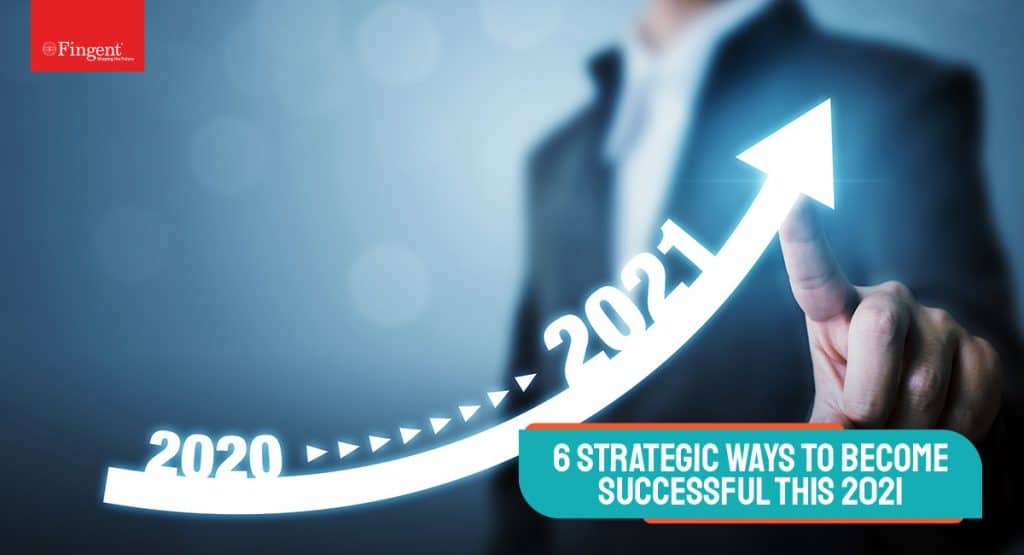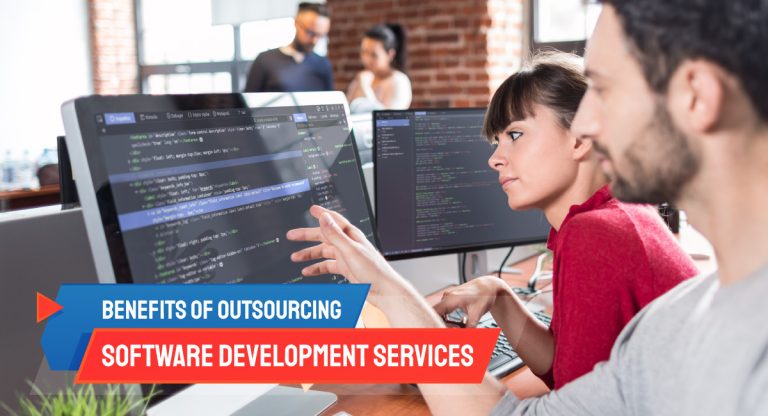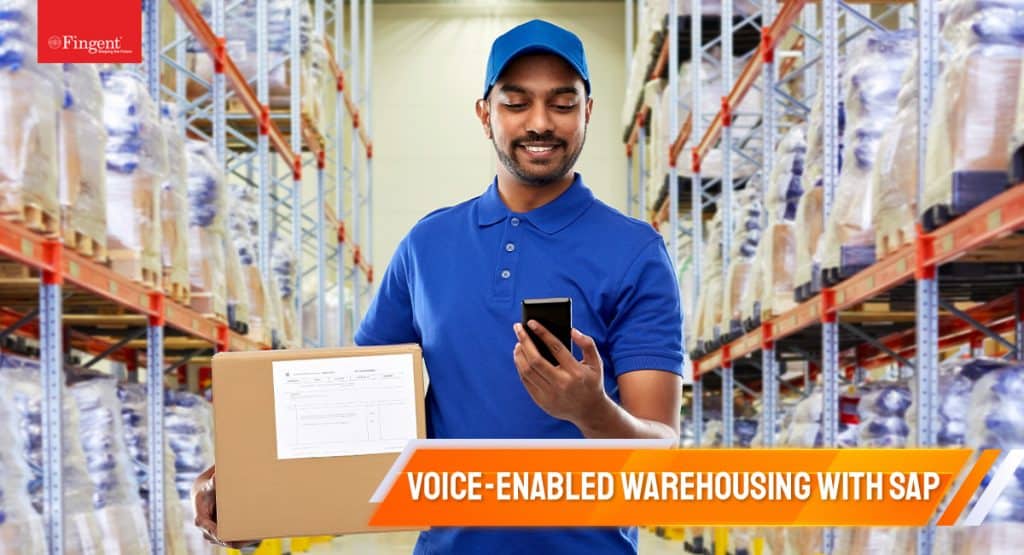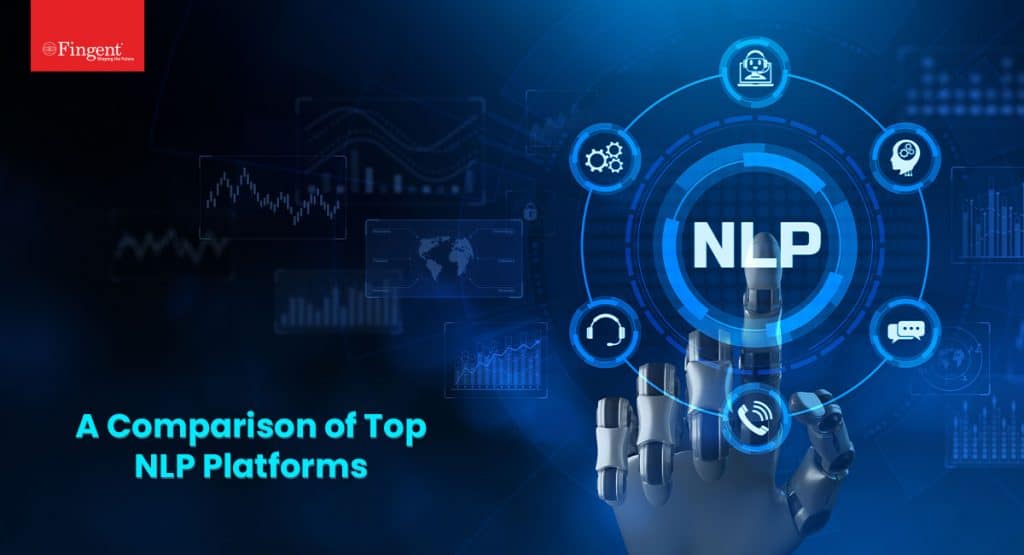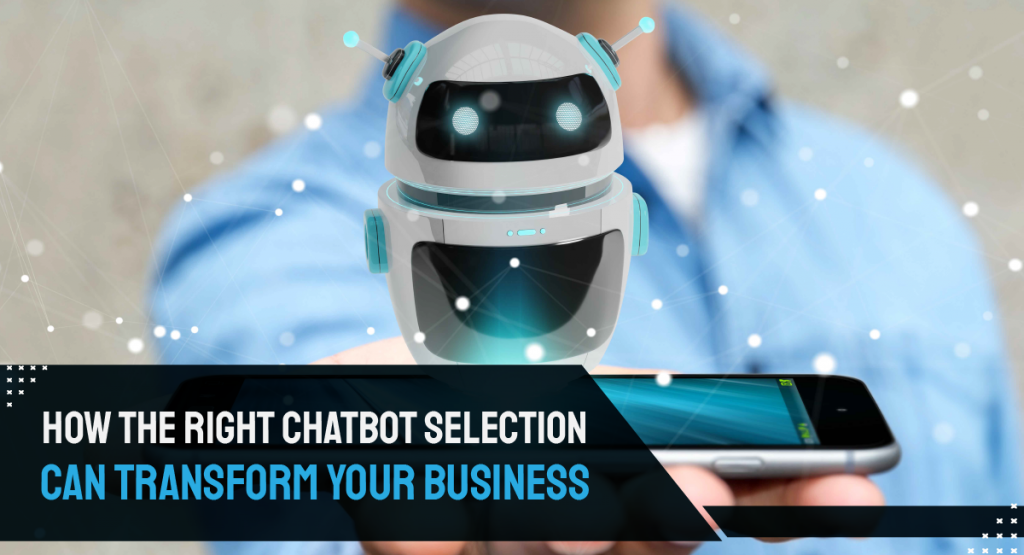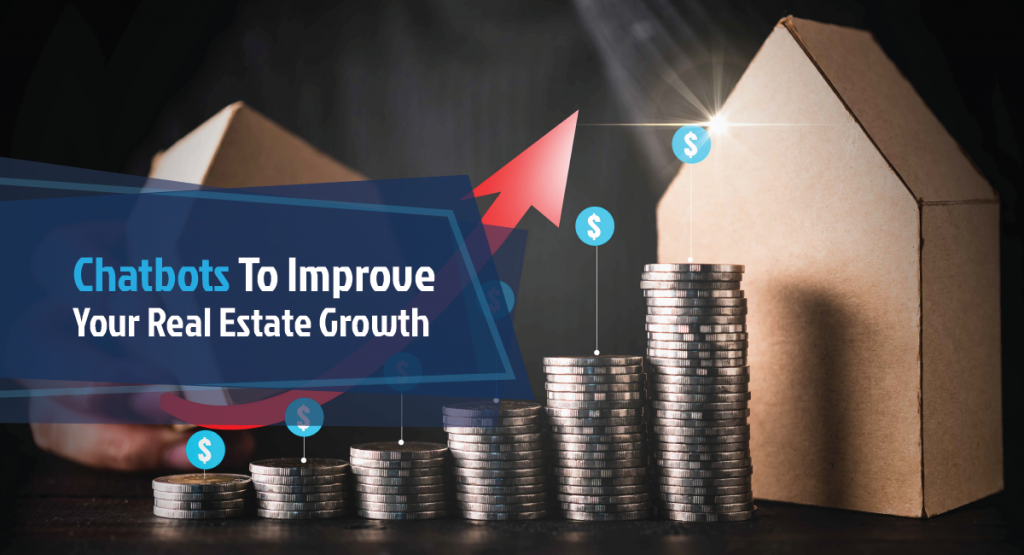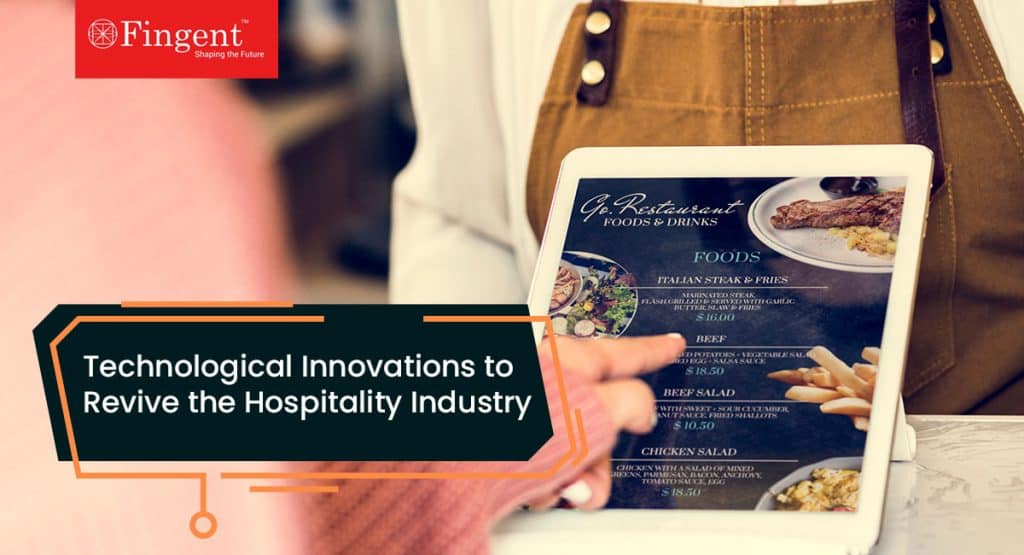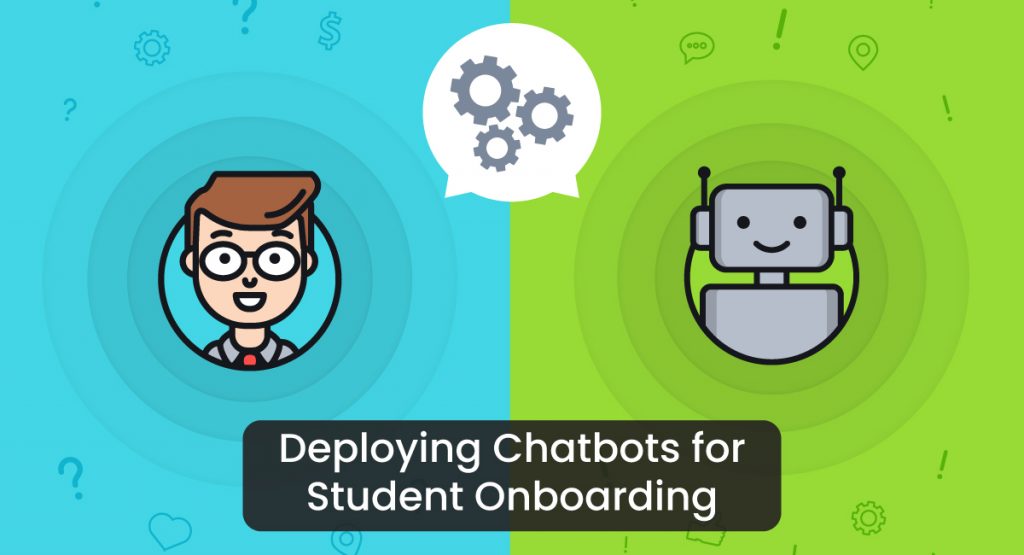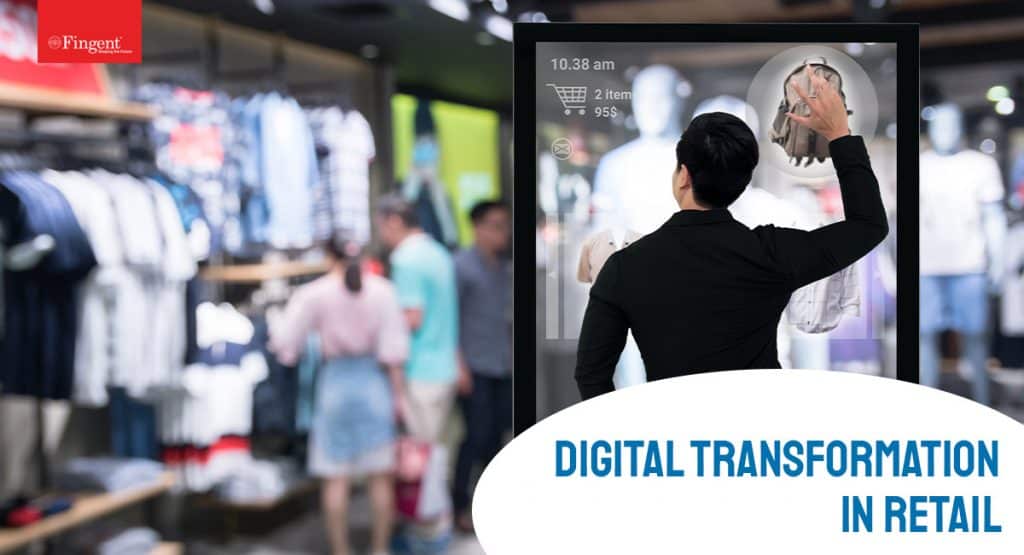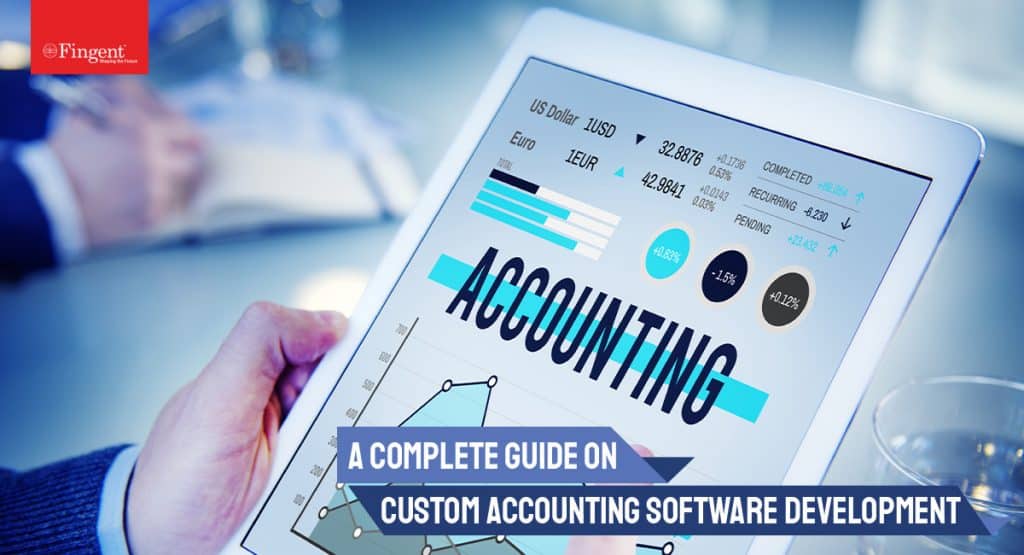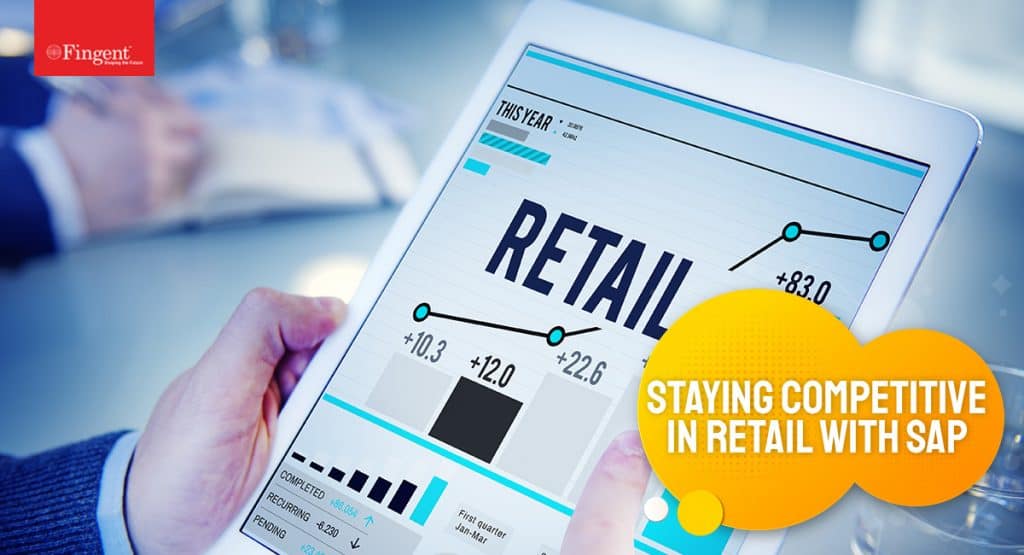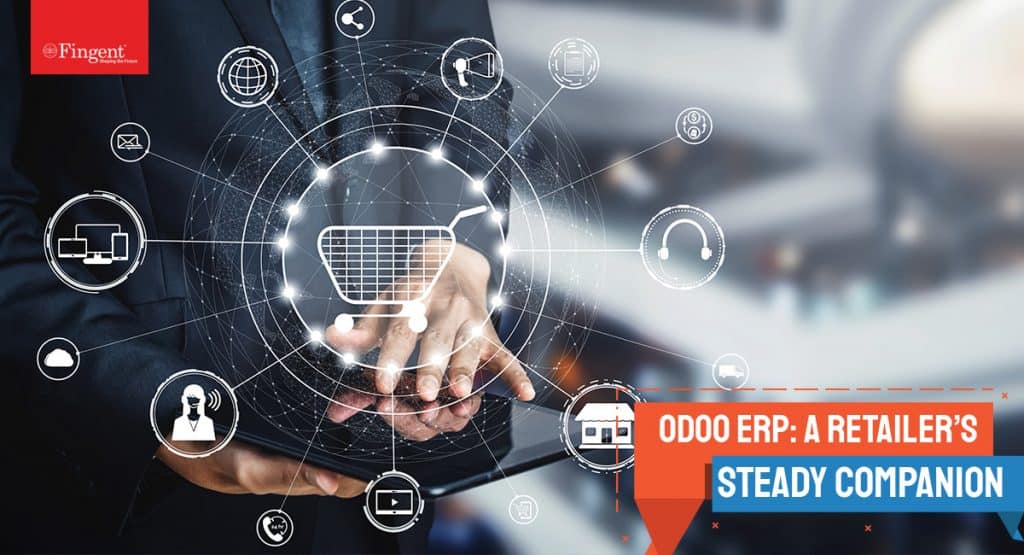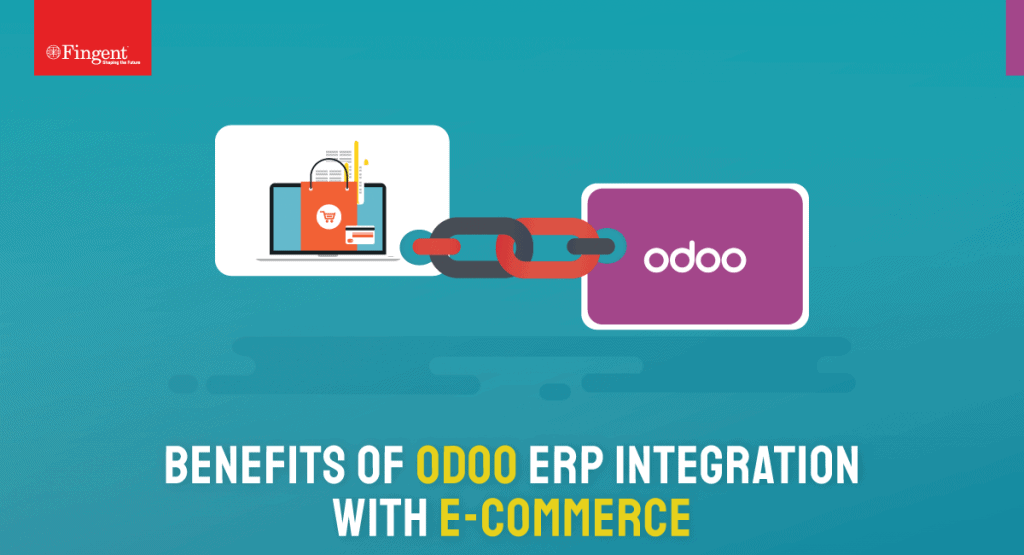Category: Digital Transformation
Custom patient engagement platforms improve caregiver-patient interactions today. Here’s how.
With the COVID-19 pandemic restricting face-to-face engagement, patients have started using telehealth (telemedicine) technology and other digital channels to receive healthcare services. The growth of digital healthcare will increase the demand for healthcare technologies in the future. 81% of people (patients) want healthcare providers to know them individually and deliver more personalized and meaningful experiences.
While support programs like teleconsulting do not replace the physical presence of healthcare providers, they offer valued information, which is the need of the hour. With stay-at-home mandates, social distancing, and lockdowns, telemedicine is the vital care model that boosts patient engagement today. Personalized patient engagement fosters trust among patients and ensures continuity of care. So, in times of pandemic and beyond, patient engagement platforms will play a crucial role.
Read more: 5 ways to optimize the revenue of your medical practice and clinical processes
Patient engagement and its growing significance
In simple terms, patient engagement is a concept where patients are actively involved and considered important decision-makers in their care.
Engaged patients are:
- Informed- as they understand their health status and the treatment.
- Empowered- as they believe they can change their health outcomes.
- Heard- as they can communicate with their providers better and participate in shared decision-making.
What is a patient engagement platform (PEP)?
A patient engagement platform is an application that enables patients to interact with healthcare providers via their mobile device, tablet, or computer. The patient engagement platform keeps the patients involved beyond the four walls of the hospital.
When implemented effectively, patient engagement platforms can help streamline access to medical records, provide appointment reminders, enable self-scheduling for patients, and deliver patient education or awareness.
How do patient engagement platforms help?
Patient engagement platforms (PEPs) can help automate the following processes.
- Send reminders to patients regarding their postoperative treatment protocols
- Allow patients to update mobility reports and pain score
- Deliver educational content
- Manage images of wounds
- Record and monitor health vitals like BP, FBS, BMI, etc.
Read more: 7 major impacts of technology in healthcare
What are the benefits of a patient engagement platform?
1. Ease the patient engagement process
A customized patient engagement platform helps improve your patient experience by assisting them in scheduling medical appointments. It can also help notify patients about their next visit to the clinic, or when they need to check their health vitals, or when their current medication course will be over. In addition, caregivers can use the patient engagement platform to track a patient’s medical history and use the data to channelize treatment plans when the patient pays a second visit.
2. Enable caregivers to focus on core competencies
With a patient engagement platform in place, patients can fill in medical forms, electronically scan their insurance cards, and consent from their mobiles, laptops, or computers. It will allow healthcare providers to focus on their core competencies and saves patients from standing in queues or long wait times. In addition, it can expedite the care delivery process during an emergency.
Case Study: Fingent partnered with Casenet’s Advanced Solutions Group to develop TruCare Insights as a reliable population health management platform. Download Now!
3. Empower care providers to make informed decisions
Healthcare organizations can use information like satisfaction scores, online appointments, wait times, and ROI to make informed decisions related to staffing and identify opportunities for improvement. Custom patient engagement platforms allow clinicians to track all this information effectively. It goes a long way in supporting clinical decision-making.
4. Optimize healthcare throughput
Patient engagement platforms allow online registration that ensures patients have less waiting time in the clinic. It enables healthcare providers to attend to more patients in a given time and improve data accuracy and demographics. In addition, patient engagement platforms spare medical professionals from time-consuming and manual data management processes so that they get time to receive advanced medical training. Nurses, physicians, administrators, and other hospital staff members can streamline their communication, increase staff satisfaction, and utilize data analytics to make strategic decisions.
Benefits to the patients:
- Patients are aware of the next steps, such as diet plans, exercises, medication plans, or next clinical visit
- Consistent and transparent care will be available 24/7
- Augmented patient engagement and experience
- Improved communication lowers preoperative stress and anxiety
Case Study: How did a data analytics solution help NHS gain financial, clinical, and geographical insights to improve visibility over their KPIs? Read Now!
What to look for in a custom patient engagement platform?
Given the changes in patient behavior, expectations, and changing healthcare landscape, healthcare providers will have to ramp up patient engagement strategies and implement the latest engagement technologies. Patient engagement platforms must enable providers to determine the best ways to deploy their expertise and services to their patients.
Read more: Digital tools reshaping the healthcare industry
So, make sure the patient engagement platform has the following capabilities.
1. EMR integration
The patient engagement platform should integrate with Electronic Medical Records (EMR). For example, the platform should receive data from the EMR, such as a referral or recall, and revert to the EMR.
2. Sentiment analysis
The main aim of patient engagement is to understand patients on a deeper, emotional level. So, it is crucial to leverage sentiment analysis technology. This will enable providers to recognize when a patient is happy or frustrated and respond accordingly.
3. Real-time and interactive patient communication
The platform must encourage bidirectional communication, specifically text-based messaging. In short, patients must be able to communicate with their health system easily.
4. Chatbot functionality and keyword actions
The use of chatbots and keywords in patient engagement platforms is trending. It helps reduce human intervention. So, the patient engagement platform should allow for automated responses to common questions such as “where are you located?” The platform must also enable keywords to trigger automation, such as scheduling a ride for patients who need a lift.
Read more: 5 leading chatbot use cases explained with real-life examples
5. Patient on-boarding
The platform should drive patients to the patient portal and help them register quickly and conveniently to get medical support on time.
6. Integration with other vendors
A single app can’t solve it all. It is just not feasible and is also not in your patient’s best interests. Make sure that your patient engagement platform integrates seamlessly with your other vendors. For example, the platform can offer billing features or even integrate with medical billing software, medical invoice management software, etc.
7. Boost employee adoption
Your staff must like and accept the patient engagement platform. If they don’t appreciate the new technology, it won’t fulfill its potential. In addition, you must ensure that the patient engagement platform enjoys enterprise-wide adoption and has a user-friendly UX and UI.
8. Offer multilingual support
As not all patients speak English, you will have to ensure that the platform supports different languages used or spoken widely by your patients.
Read more: 5 essentials to an effective healthcare application
Why should you adopt a custom patient engagement platform?
A custom patient engagement platform is specifically developed for your organization to cover your unique healthcare requirements and cater to your internal processes.
As such a platform is built from scratch, it gives you the freedom of choice for technology. Additionally, you can easily integrate this platform with third-party systems because you get to control the code entirely. Also, you will have full ownership of the final product and customize the software according to any relevant changes in your organization.
Benefits of a custom patient engagement platform
- High scalability
- Seamless integration to your existing infrastructure
- Enables integration with any new services you are willing to include in your medical practice
- Freedom to choose the technology
- Gain full ownership of the resulting solution
Custom patient engagement platform is best suited for medical practices that:
- Offer a wide range of services
- Plan to expand in size and services
- Have rigid workflows that are difficult to adapt
- Want to integrate the new solution with the existing system
Read more: The application and impact of information technology in healthcare
Develop your custom patient engagement platform with Fingent
At Fingent, we have the expertise and work closely with you to build a custom patient engagement platform to suit your business needs. Our experts help you select the best web development frameworks, database and backend technologies, data visualization formats, and leading front-end technologies to develop your patient engagement platform or any medical software that you would require.
Fingent helps you develop healthcare application platforms tailored to your needs, with top features like appointment scheduling, medical billing, patient feedback management, payment processing, chatbot, and fundamental to in-depth analytics. To know more, please get in touch with us.
Stay up to date on what's new

Featured Blogs
Stay up to date on
what's new



Talk To Our Experts
How Various Industries are Leveraging AR, VR, and MR Today?
Augmented Reality (AR), Virtual Reality(VR), and Mixed Reality (MR) may sound the same to many of us. But do you know that each one is different? AR, VR, and MR are different tech concepts with characteristics that differentiate each from one another.
Here’s what you need to know about each of the technologies, along with a few examples.
Augmented Reality
Augmented Reality uses computer vision along with mapping and depth tracking to show the appropriate content to the user. This functionality allows the cameras to collect, send and process the data to show the appropriate content to the user.
AR is designed for unrestricted movement while projecting images or other objects that you are looking at and enhances the user’s physical environment with contextually relevant digital content in real-time. A user can experience Augmented Reality with a smartphone or special hardware.
Watch Video: Augmented Reality in Education Transforms Learning Experience
Some of the interesting real-world examples of AR
1. AR in Gaming
Games like “Pokemon Go” project a Pokemon on your screen, on top of whatever your mobile camera focuses on. Augmented Reality has beautifully combined the real world with the favorite Pokemon characters.
2. AR in Medical Training
Augmented Reality is finding its virtue in medical training today. For example, students at the Cleveland Clinic, Case Western Reserve University are learning human anatomy using AR headsets or glasses. AR allows them to examine the human body without the need for dissecting cadavers or watching live operations.
Read more: How Augmented Reality in Healthcare is set to Transform the Industry in Future
3. AR in Retail
The retail sector also has been taking advantage of AR to help customers have a more enjoyable and interactive shopping experience. For example, Harley Davidson has developed a unique mobile app for its customers that allows them to view a motorcycle in-store using AR and customize it by adding accessories, changing paint jobs, etc.
IKEA, the leading retail conglomerate, has rolled out AR-powered retail apps that allow customers to “try on” clothing remotely before buying them online.
Read more: How Top Brands Embrace Augmented Reality to Offer Immersive Customer Experiences
4. AR in Manufacturing
Augmented Reality enables the manufacturing industry to gain a competitive edge by helping companies improve quality and productivity. Workers can get assistance from AR gadgets to save time, reduce errors and increase efficiency. Some of the world’s biggest brands like Boeing and General Electric are already using AR in their manufacturing processes.
Using AR glasses allows Boeing’s technicians to easily view the wiring renderings in the aircraft fuselage without external distractions.
Augmented Reality enables GE mechanics to be more productive as the technology offers them step-by-step instructions and visuals directly within their line of sight. They also get alerts in real-time through AR smart glasses so that they can inspect every step before moving on.
Read more: How Augmented Reality Simplifies Equipment Maintenance
Virtual Reality
Virtual Reality Environments (VREs) allow users to experience real-life scenarios via simulated counterparts and gain practical knowledge that would otherwise be difficult to comprehend in a real environment.
As the main focus of Virtual Reality is on simulating the vision, you will have to wear a VR headset such as Oculus Quest or HTC Vive Cosmos in front of your eyes that eliminates any interaction with the natural world (avoids distractions). Typically, two autofocus lenses are placed between the screen and the user’s eyes. The lenses adjust based on the individual eye movement and positioning. To render the visuals on the screen, you can use an HDMI cable connected to the PC or mobile phone.
Virtual Reality uses speakers, goggles, and even handheld wearables to simulate a real-world experience. You can also employ visual, audio, and touch simulation to create a more immersive reality.
A few real-life applications of VR
1. VR in Education
Virtual Reality can make learning more engaging and immersive. In addition to schools and universities, virtual experiences can help businesses train their staff. Currently, Unimersiv is offering VR educational content for institutions and companies.
Case Study: Using 360-degree VR simulations, the University of North Carolina offers an immersive campus touring experience to aspiring students. Download now!
2. VR in Real Estate
For years, real estate agents have used photos and graphic designs to showcase properties to prospective buyers. Today, Virtual Reality has transformed real estate property tours, making them more personalized, immersive, and close to reality. Being an immersive technology, VR enables potential buyers to experience a 3D walkthrough and understand better what each property has to offer even before scheduling a physical site visit.
For example, Sotheby’s, one of the world’s leading luxury realty brands, offers Virtual Reality home tours and videos to its clients. Potential buyers can view properties and spaces from the comfort of their homes using a web browser, or a smartphone, PC, laptop, or through a wearable headset.
Read more:How Virtual Reality can Transform Your Real Estate Business
3. VR in Marketing
VR is helping businesses reach out to their audiences by launching immersive and engaging marketing campaigns. With the COVID-19 pandemic compelling people to shop online and companies to transform digitally, Virtual Reality is gaining more popularity as it is helping people get a feel for products without leaving their homes.
For example, IKEA has introduced a VR app that enables users to experience kitchen remodeling. Using the VR Kitchen app, you can explore the virtual kitchen and interact with the objects using a VR headset.
4. VR in Healthcare
Virtual Reality helps doctors understand their patients’ needs better as it provides an in-depth look into human anatomy. Today, VR is extensively used in surgical training.
An educational project conducted by the University of New England (UNE) successfully used VR to teach empathy to medical and health profession students. The project used a VR tool called “Alfred Lab app” – to teach students about macular degeneration and hearing loss from a 74-year-old African American man’s perspective. Realizing an aged and ailing patient’s thoughts and concerns enables the residents to develop empathy towards such patients.
Read more: How Virtual Reality Improves the Standard of Medical Education and Training
5. VR in Travel and Hospitality
The travel industry is facing the hardest time ever in its history. However, vaccination rollouts on a global scale and international travel relaxations now give a fillip to travel, tourism, and hospitality. An early adopter of digitalization, the travel industry has already forayed into Virtual Reality. Travel businesses attract tourists and even promote holiday destinations through virtual staging and tours. Virtual Reality also allows people to explore the world virtually, especially those who cannot afford to travel.
Google StreetView is one of the best examples of how VR is being used in the travel industry. In addition to viewing panoramic images on a computer, it allows users to enable Google Cardboard mode for a Virtual Reality experience.
Mixed Reality
Mixed Reality, sometimes known as hybrid reality, combines the elements of both AR as well as VR. However, here the virtual content is not only overlaid on the actual environment but is fixed to and interacts with that environment. In simple terms, Mixed Reality lets you see virtual objects just like Augmented Reality, but these objects are capable of interacting with the real world. In simple words, Mixed Reality is more like immersive and interactive Augmented Reality.
MR is still in its nascent stages and may take time to create an impact like the other two technologies. One of the most remarkable Mixed Reality apparatuses is Microsoft’s HoloLens.
Opportunities provided by Mixed Reality
1. MR in Education
Mixed Reality allows students to see both the real world as well as the holograms. MR offers an immersive learning environment enabling students to understand better.
Case Study: Find how Fingent developed a unique Mixed Reality application for a leading university that enables users to identify people using facial recognition. Download Now!
2. MR in Manufacturing
Mixed Reality provides workers with real-time assistance, thereby facilitating manufacturing processes. The technology allows workers to see holographic instructions, so they know what to do. This minimizes human errors and improves quality significantly. Mixed Reality is also helpful for repairs and maintenance, especially in industries that require precision and expertise.
For example, Renault Trucks integrates Mixed Reality into its manufacturing process for enhancing engine quality control at one of its factories.
The blurring line between physical and virtual
While Virtual Reality takes you to the virtual world from wherever you are, Augmented Reality adds to the reality by projecting information on top of what you see. Mixed Reality combines both AR and VR. All these technologies, though powerful, are yet to make their mark with consumers. That said, they can completely change the way we use computing devices, gadgets, and technology in the future.
Are you thinking about delivering immersive virtual experiences to your customers that can overtake physical encounters? Talk to our reality tech experts today.
Stay up to date on what's new

Featured Blogs
Stay up to date on
what's new



Talk To Our Experts
Add More Zest to Your Ecommerce Marketing and CX with 3D Web Configuration
Having a digital infrastructure is inevitable, but it just isn’t enough to keep up with the competition. Achieving business success is about “wowing” your e-commerce buyers. In the post-pandemic world, businesses must find engaging and innovative ways to increase customer satisfaction and experience. A recent Frost & Sullivan study showed that by 2020, customer experience would overtake price and product as a key brand differentiator. True to this, business in 2020 was entirely driven by customer experience.
View Infographic: Business Technologies to Boost Customer Experience and Satisfaction
Local shoppers switched to online shopping, door deliveries were encouraged, telemedicine became more popular, mobile and internet banking users increased, and even classrooms became virtual.
So, how do you “wow” your customer in this age of online shopping? By giving them as close to the real experience as virtually possible!
How do you do that? With a 3D configurator!
A 3D product configurator allows your customers to see exactly how your product looks, acts and feels. It gives them a personal connection with their potential purchase. 3D configurators have become an integral part of the sales process and rising customer expectations during the pandemic, making it vital for specific industries.
This blog helps you understand what a 3D web configurator is and how it can help increase your e-commerce sales and boost customer satisfaction.
Read more:How Custom Retail Software Solutions Help You Gain a Competitive Advantage?
What is a 3D Web Configurator?
In the past, customers were satisfied to see a static photograph that they could easily zoom in and out. However, with the changed circumstances and digital development, customers would like to view how various product designs or features would look in real-time, allowing them to spin, zoom, scroll, and rotate. That is precisely what a 3D web configurator allows your customers to enjoy.
A 3D web configurator is defined as an interactive tool powered by 3D models that lets your customers personalize a product to their specifications in real-time. Plus, it allows them to choose custom options and watch them transform instantly, and receive estimates of the costs based on their customizations.
This service gives your customers the feel of being at your store because it gives them the ability to get the feel of the product, such as the color, texture, and other aspects of your product. Customers can watch it from any device without using plugins.
Essentially, 3D configurators are not just for retailers and car companies. All industries that sell customizable products can benefit from letting their customers see how their products look in real-time. Once this service is implemented, you can increase your ecommerce sales and boost customer satisfaction.
Read more: 6 Ways to Accelerate Business Growth and Success in 2021
How does a 3D Web Configurator Work?
A 3D web configurator accomplishes two pertinent e-commerce goals:
- A detailed exploration of your products
- The ability to customize the product to a customer’s specific needs
When your customers have not zeroed in on a particular product, your 3D configurator steps in to display different combinations and options for that product to inspire them to make an informed decision. In effect, your 3D configurator will help them check out the colors, styles, material and combine them in different ways until they create a personalized product. Then, as they mix and match their specifications, your configurator will allow them to see their combinations in 360-degree, in real-time mode, along with the price. Such precise control over their product will encourage them to make a purchase.
Read more: How Top Brands Embrace Augmented Reality to Deliver Immersive Customer Experiences
How 3D Web Configurators Boost E-Commerce Sales and Customer Satisfaction?
1. Enable omnichannel experience
As mentioned at the outset, 3D configuration solutions do not require a third-party plugin which limits the number of customers who can view your product. Above all, it can be formatted for events or used in interactive stores as it can also work offline. Such interaction encourages your customers to participate in your productions, ensuring you understand their choice and budget.
2. Grow your e-commerce sales
Your customers will have proactive control of what they want to buy as 3D configuration solutions allow them to try out various combinations virtually. Once you know their exact requirements, you can minimize errors, misunderstandings, and mistakes between you and your customer.
3D web configuration reduces barriers to the market as you will be able to release the options to your customers during the first stage of product development. Thus, you can grow your e-commerce sales as your customers know that you understand them clearly and provide them with quality products.
3. Save costs
3D web configurators can redefine and shorten the sales cycle as real-time customer responses/ reactions can help you create better outcomes. This allows you to track consumer behavior in real-time. Also, you can reduce the quantity of raw materials you need to stock as you will now create products as per request.
Furthermore, you can minimize significant expenses incurred in logistics and storage to a great degree. You can also personalize this unmatched 3D technology to become as responsive as the rest of your website.
4. Place your customers behind the wheel
As the factory floor entered the digital age, brands must let their customers take the driver’s seat for tremendous success. Only then will you precisely understand what your customers want. Knowing that will help you meet their demands accurately. The 3D web configurator allows your customers unparalleled freedom to bring their dream product to life, ensuring their satisfaction.
5. Distinguish your brand with a “wow” factor
Consumer attention has created intense competition between brands, forcing them to spend billions in an attempt to find the magical ingredient that will capture and retain the attention of their customers.
What determines whether their attention sticks or moves away is the “wow” factor that keeps them returning for more. A 3D configurator will help you ensure that your customers are “wowed” each time they visit your website because they would have truly enjoyed the experience. Your configurator can boost customer satisfaction by delivering the experience needed to attract and amaze your customers repeatedly.
6. Boost sales
3D web configurators increase conversion rates and revenues as your customers can make informed decisions without delay. It gives them all the information they require to make a quick purchase. For example, it offers details such as customization of the product, price, immediate and direct contact with the salesperson, detailed descriptions, and a strong call to action. Additionally, you can avoid cart abandonment scenarios through increased engagement.
Make 3D Web Configurators Your Launching Pad
Customer engagement and interactive product visualization can customize a product of choice and provide a tangible in-store experience to your online customers. It can become a launching pad for increased growth, higher sales, and conversions. Would you like to experience the power of a 3D web configurator and don’t know where to start? Get in touch with us right away.
Stay up to date on what's new

Featured Blogs
Stay up to date on
what's new



Talk To Our Experts
How does legacy cloud migration ensure business continuity in FinTech? Explore in this article.
Did everyone have Business Continuity Plans in place and protocols to follow during the pandemic? Yes, definitely. Did anyone expect a disaster of magnitude like this? Not in their wildest dreams or gloomiest forecasts! The pandemic forced hundreds of millions of employees to shelter in place, essentially moving all operations online. Not all organizations were equipped with the needed technological tools, and most businesses were caught off-guard. FinTech companies were not immune to the aftermath.
For example, pre-COVID-19, it is true that a few FinTech organizations began migrating to Cloud. But, conversely, there were many who hesitated to embrace the cloud migration strategy because of legitimate concerns over critical factors such as rising costs, managing complex business data and workloads, re-training existing IT staff, and more.
The pandemic was a wake-up call that helped businesses identify legacy cloud migration as a relevant and vital choice. Though most companies have realized that modernizing old, outdated business applications can boost productivity and increase efficiency; some are still hesitant about their cloud migration strategy.
Read more: 11 Practices Followed by Leaders to Build Resilience and Ensure Rapid Business Recovery
This blog explains why FinTech organizations must consider legacy cloud migration seriously and what are some specific benefits of cloud migration strategy.
What is legacy cloud migration?
Legacy cloud migration involves moving on-premise applications, outdated software, or programs that a company has relied upon for years. These applications may include everything from sales or CRM applications to industry-specific applications. Some FinTech organizations may be reluctant to migrate to cloud just because legacy cloud migration is a daunting project. However, maintaining a status quo can be detrimental to your business growth.
Read more: Why modernize your legacy systems? What’s the best approach to legacy systems modernization?
Legacy cloud migration is the only light at the end of the tunnel
The pandemic has triggered a significant reexamination of FinTech businesses and their IT priorities. Gartner predicts that “by 2022 cloud shift across key enterprises IT markets will increase to 28%.” This era of economic uncertainty caused by the pandemic affected all businesses, especially, FinTech organizations. A report from Yellowbrick showed that 84.3% say cloud computing is more important than workplace disruption.
Thankfully, cloud migration strategy was available when it was most needed – a phase when maintaining business continuity has become a priority. Consider the most important reasons for legacy cloud migration.
Why FinTech Companies Should Embrace Legacy Cloud Migration
1. People matter more than premises
As the pandemic hit the world with one wave after another with no time to catch a breath, there was a dire need for remote self-service technology. The massive role played by people working from home is a clear indication that people matter more than premises. A year ago, cloud migration strategy was considered discretionary. Today, work from home has made cloud migration mandatory.
Read more: Why It’s Time to Embrace Cloud and Mobility Trends To Recession-Proof Your Business?
Hence, now is the time for FinTech organizations to plan for their business continuity to remain adept for future upheavals, disruptions, or even disasters. When your organization migrates to cloud, you ensure your teams’ effectiveness while working remotely.
2. Prepare for the next
Though the pandemic is wreaking havoc, it will recede in due time. However, what remains is a possibility of a similar recurrence of disruption in the future. Hence, FinTech organizations must prepare for future disruption by recognizing that the calamity to come may not be another pandemic but its functional equivalent. Legacy cloud migration will equip you to face any future disruptions and remain resilient.
3. Facilitate real-time payments
Banks are well aware of the advantages of real-time payments. The race is on for upgrades and integrations that allow organizations to leverage real-time payments. A survey of over 500 executives indicated that 71.9% are ‘extremely interested’ in such payment capabilities. Above all, cloud brings in scalability and agility to real-time payments. Cloud migration strategy can improve the speed and consistency of transactions. Besides, it can enable fast and frictionless transactions.
Legacy cloud migration allows banks to adopt digital payments. Banks can address many of their traditional payment pain points, such as spikes in demand.
Collaborating between payment players and cloud service providers can help your organization provide a more secure digital experience for your customers. This is of paramount importance in a world where contactless interaction is the key. According to a McKinsey survey, banks that adopt digital transformation were able to increase customer satisfaction by 15-20%, reduce cost by 20-40%, and boost conversion rates and growth by 20%.
While consumer expectations and payment preferences continue to evolve rapidly, cloud migration strategy will help FinTech industries to stay relevant and continue to grow.
Read more: Safeguarding IT Infrastructure From Cyber Attacks – Best Practices
4. Scalability and flexibility for an uncertain future
FinTech firms need an infrastructure that can grow with them and protect their business from future disruptions. Migrating to a cloud platform equips FinTech firms to adapt to branch closures while extending banking services to as many people as possible. Legacy cloud migration provides the agility to scale with speed while saving on on-premise infrastructure that is comparatively expensive to maintain and upgrade. Moreover, it can provide your organization the needed accessibility, flexibility, and scalability during economic downturns.
5. Manage risks and compliance
Efficiency, automation, and cloud-based delivery will be critical for compliance operations. It is vital to use next-generation technology and emerging digital approaches to optimize risk modeling. Since legacy cloud migration is agile, flexible, and low cost, it can solve many challenges in operational risk and financial crime compliance activities. Additionally, solutions deployed in the cloud can assist with operational challenges.
6. Data management
Acquiring large quantities of accurate data is a top priority for all FinTech firms. Their success depends on all the information they must collect, from onboarding to analyzing their spending habits. Cloud migration strategy enables your firm to gather and store data securely while allowing your designated employees to access it from anywhere when required.
Read more: Cloud Migration Strategy: 7 Steps to Accomplish a Flawless Transition
The FinTech industry is at a crossroads now. How it responds to the current crisis will determine its future. The key to the survival of FinTech companies will be the rapid digitization of their business and the adoption of cloud migration strategy. Migrating to the cloud is as important as the historic move from typewriter to computer. Cloud migration has become a global force for business growth. It can reduce overhead costs and help your team focus on increasing productivity and performance.
Cloud migration strategy will become inevitable as the FinTech industry builds a more accessible financial world. By partnering with a cloud migration services provider like Fingent, you will be able to quickly and seamlessly migrate to the cloud without disrupting your business. We also help you build FinTech applications and platforms leveraging the latest technology in the market. So, give us a call, and let’s get talking.
Stay up to date on what's new

Featured Blogs
Stay up to date on
what's new



Talk To Our Experts
How CEOs Can Gain Value from Software Development Outsourcing
In-house creation of a complete and sophisticated software application requires large amounts of resources and time. Maintaining an in-house team amid the coronavirus lockdowns has added to this and become increasingly complex. Frankly, in these turbulent economic times, software development outsourcing can prove more profitable to your business than ever before.
Software development outsourcing offers limitless possibilities to CEOs. As the world is connected by the power of the internet, you can access the talent you would normally be hard-pressed to find. Additionally, finding an expert offshore software development company that meets your fast-approaching deadlines is another benefit.
As CEO of your company, before you take full advantage of software development outsourcing, you need to know how you can leverage outsourcing effectively. Here is a comprehensive guide that will help you understand various aspects of the offshore software development process and prepare you to face the challenges it can bring your way.
Does Your Business Need Offshore Software Development?
For most businesses, hiring an offshore development partner’s services has helped them breathe easy and take the load off their shoulder. Here are a few scenarios where the offshore software development model will prove to be the best solution for your company.
1. Do you require talent with narrow expertise?
Software development outsourcing improves the quality of your team as it gives you access to a vast talent pool with narrow specialization. Such resources allow you to leverage both international perspectives and onboard the best talent.
2. Do you need to scale your team?
If you lack an excellent in-house team that can undertake multiple projects simultaneously, it is time to consider offshore software development. This allows you to scale up your team of experts without spending a fortune or risking output quality.
3. Do you want to concentrate on your product?
Software development outsourcing can help you automate most mundane operations such as payroll and accounting. This will help you concentrate on the growth of your company and innovation.
Read more: Offshoring Software Development: Here’s All You Need to Know
Advantages of Software Development Outsourcing
Software development outsourcing can help your company experience higher production levels without spending too much money or energy. Partnering with the offshore software development team will help you carry out temporary tasks, improve the pace of your growth, and reduce your labor costs. In other words, it gives your company a much-coveted competitive advantage by improving customer service while ensuring limited-budget product quality. Here are some specific benefits of offshore software development.
1. Saves costs
Cost-saving is one of the most significant benefits of software development outsourcing. Whether you want to scale up your employees or scale down, outsourcing a whole project is much cheaper than hiring each developer separately. The difference in salaries across the globe can save you millions of dollars. Offshore development allows you to get the same amount of work done, with the same quality, in the same amount of time at a much lesser cost as different countries have different living costs. For example, the average offshore software development rate in India per hour is $30, whereas, in the USA, the hourly developer rate will cost around $100.
2. Flexibility
Once you offshore your development requirements, you do not have to spend time recruiting, training, and housing new employees. Besides, it is impossible and impractical to hire a full-time in-house contractor for your short-term projects. Software development outsourcing gives you the option of choosing developers for a single project. You can find talent that fits perfectly without investing in a permanent position. This will give your core team some relief as they can concentrate on mission-critical activities essential to run the company and focus on the development process.
3. Saves time
Offshore software development relieves you from searching for new developers and preparing them to suit your needs. It can also improve speed to market as it helps your management and key employees to focus on the core business. Since it can eliminate secondary tasks, you can redistribute your services for more essential aspects of the organization.
4. Centered approach
One of the most competitive advantages is the ability to have a focused strategy. If the in-house team needs to deal with several projects simultaneously, they may be forced to compromise on quality. However, Software development outsourcing can streamline your business process. This will allow your employees to take a centered approach and produce high-quality output within the set timelines.
5. Technological advantages
Businesses seeking to gain a competitive advantage will develop cutting-edge innovations using the latest technologies without expending an additional amount of time and resources in learning them themselves. This is possible when they team up with strategic offshore development partners with a proven track record.
6. Compensate for the lack of in-house experience
Software development outsourcing can bring in additional knowledge and power to reach your business goals. Outsourcing offers the flexibility to use your resources where there is a need as it allows you to scale up or scale down as required. It means that you can either let go of certain talent in one field while allowing you to quickly add specialists to your pool of experts in another field. You can employ a team of varying size, complexity, and cost. Such a team will be able to find optimal solutions contributing to the growth of your company.
Read more: Why Software Development Outsourcing is a Smart Move Now
Best practices to follow while offshoring software development
Here are a few points to consider when you decide to outsource your software development project:
- Get introduced to all the developers who are supposed to work on your project.
- Ensure to have a full-time on-shore lead and an offshore lead to help establish necessary coding standards, solve technical issues, and mentor the offshore team.
- Use video conferencing to arrange regular meetings to handle any problems and resolve the same in a timely and efficient manner.
- Use appropriate tracking tools (project management tools) to plan tasks efficiently and prioritize work accordingly.
Read more: Selecting the Right Engagement Model for Business Software Development
Offshore Software Development with Fingent
Since 2003, Fingent has been a reliable and capable offshore partner for leading global brands, including many Fortune 500 companies. With an impeccable track record as an offshore software development team, Fingent has helped improve cash flow and increase business efficiency for many clients. We help your organization scale up as required without the need to hire or fire any of your team members.
Our diverse offshore talent pool includes experienced developers and tech professionals who leverage the latest software development trends, such as automation, cloud computing, Artificial Intelligence (AI), Internet of Things (IoT), Augmented Reality (AR), Virtual Reality (VR), 3D Web Configurator, Robotic Process Automation (RPA), Mobile application development (native, hybrid), Microsoft solutions, SAP solutions, and so on.
Our experts are available to provide you with inputs on your project. Let’s get talking and find out which process fits your project.
Stay up to date on what's new

Featured Blogs
Stay up to date on
what's new



Talk To Our Experts
How is Augmented Reality Set to Transform The Future of Healthcare?
Augmented Reality in healthcare has emerged as one of the most exciting technologies expected to grow and transform medicine and surgery. In 2020, Augmented Reality saw unprecedented growth. According to a report by AR Insider, 598 million AR units were active at the end of 2020. By 2024, the total number of active AR devices is estimated to be 1.73 billion, states the report.
Augmented Reality allows us to experience the real-life environment around us with a digital augmentation overlaid on it. It works by integrating digital information into the user’s environment in real-time. In AR, the objects that reside in the real world are enhanced using computer-generated capabilities. AR includes graphics, effects, sounds, text, and touch feedback to improve the user experience. Due to its versatility, AR is becoming more accessible and affordable for medical imaging, medical education, dentistry, and training nurses. Leading examples of AR in healthcare include AccuVein, ARnatomy, VIPAR, and VA-ST.
Read more: Impact Of Augmented Reality In Education Industry
In this post, we will look specifically at the future of Augmented Reality in the healthcare industry.
Augmented Reality helps examine the human body without the need for visualization using displays and sensors. Augmented Reality is used to educate patients today. For example, doctors can use AR to explain surgical procedures or health conditions. Google Glass with AR was first used by Dr. Rafael Grossman during a surgery.
Here’s why augmented reality in healthcare is a boon for medical professionals, future medical research, and education.
Read more: How Virtual Reality Improves the Standards of Medical Education and Training
1. AR in patient care
- Most patients are unable to explain their symptoms to the doctor. However, Augmented Reality helps patients address their concerns. Patients can use AR to check their symptoms and the state of their health. Also, doctors can show the patients the effects of their current lifestyle and help them make positive changes.
- Using 3D AR technology, patients can see how the drug works within their body instead of reading the long list of drug descriptions of prescribed medicine.
- New mothers have a tough time during the initial days of breastfeeding. A Melbourne-based company in association with the Australian Breastfeeding Association conducted a Google Glass test. The mothers could easily share their problems with experts and find solutions while breastfeeding. Thanks to the AR-enabled technology of Google Glass, this was possible. The lactating mothers were able to communicate their problems in real-time and seek medical aid quickly.
- AR enables storing life-saving information on custom apps. For instance, Radboud University of Netherlands has developed an AED4EU AR-driven mobile app. This app tells you the exact location of automated external defibrillators. So, during an emergency, you can access a crucial life-saving piece of information.
2. AR for surgeons and nurses
- Sometimes, it is tough to find the vein to draw blood from the hand or to inject intravenous shots. Thanks to AR hand-held scanner technology, a nurse can easily see the vein to draw blood or give a jab. The patient also feels relieved to have found the vein in the first attempt. Not only does it save time, but it ensures that the elderly or children are not faced with undue coercion while taking the shot.
- Surgeons can leverage 3D AR to operate with precision. It helps prevent unnecessary risks and increases the success rate of many complex surgeries.
- Surgeons can use image reconstruction technology to reconstruct any tumor. It enables surgeons to view X-rays in real-time and locate a tumor anywhere in the body and operate on it. Simply put, AR helps reduce the difficulty level and risk to a great extent.
While everybody knows the importance of staying healthy, most people take their health for granted. AR can be used to diagnose the human body to understand the current state of health. Dietitians and nutritionists can use the learnings to encourage and persuade people to bring desirable changes to their lifestyles. Using AR, you can make boring activities like a morning walk or jog more pleasurable. AR apps such as “Zombies, Run!” helps convert your daily running task to a game format. It can push people to take care of their health more seriously.
AR and the future of healthcare
The future AR market is more likely to resemble the present smartphone market. We will be our own doctors, which will enhance self-care. Suppose every wearable device or smartphone ends up representing a doctor. In that case, the healthcare costs can be lowered significantly, several thousands of lives can be saved, and our living standards can be improved tremendously.
Of course, we will still need medical professionals and specialists to diagnoses specific cases. However, instant AR telehealth devices and remote patient monitoring tools will make the experience of visiting a doctor less intimidating.
Mental health depression is one of the key fields of medicine that is often overlooked. By integrating AR with artificial intelligence (AI), the ability to detect and identify voice tones, facial expressions, and physical behaviors can help doctors and families identify any signs of mental illness or depression in real-time. Brain Power, a start-up, enables people with autism to learn life skills and measure their learning progress.
Watch Video: How AR can be a powerful learning tool in the future
Augmented Reality in healthcare is witnessing several mergers and acquisitions due to an influx of software, hardware manufacturers, mobile data, and voice businesses.
Several AR companies are also addressing regulatory and privacy concerns to become successful in the healthcare space. This will benefit AR-assisted surgeries, in-patient behavioral and rehabilitation programs, and staff training. By 2025, people will be able to analyze their health in real-time through AR-based apps, giving them a snapshot of how unhealthy lifestyles would affect their bodies and help them take precautionary measures to maintain good health.
To sum up
Summing up, we can say that augmented reality in healthcare is a game-changer and a boon for the industry.
We at Fingent develop tailored healthcare AR systems and applications that help improve quality of care, cost and meet your healthcare requirements by automating the process of collecting and measuring enormous amounts of healthcare data. Contact us today for more details!
Stay up to date on what's new

Featured Blogs
Stay up to date on
what's new



Talk To Our Experts
SAP ATTP Enables COVID Vaccine Manufacturers to Overcome Supply Chain Vulnerabilities. Find How!
Vaccinating the whole world and making everyone resistant to COVID-19 is a daunting task. From managing product life cycles to supply chain tracking, and massive distribution, SAP Advanced Track and Trace for Pharmaceuticals (SAP ATTP) is helping the world’s leading vaccine manufacturers.
With regulatory requirements looming, meeting the target of delivering COVID vaccines to millions will require an efficient system that will eliminate any hiccups in the supply chain. Pharmaceutical companies must examine serialization and track and trace solutions to control the chain of custody to prevent tampering, counterfeiting, theft, and diversion.
Read more: 7 Practical Steps to be Implemented by Organizations that Engage in COVID-19 Vaccine Delivery
Thankfully, SAP ATTP (SAP Advanced Track and Trace for Pharmaceuticals) has emerged as a solution. It can enable your company to comply with serialization and associate reporting requirements. As SAP ATTP was co-developed with the leading pharmaceutical companies, it can be tailored to address the specific needs of your pharma company and your stakeholders. This blog will explain how SAP ATTP can quicken and smoothen the race to vaccinate the world. Let us begin by understanding what SAP ATTP is.
What is SAP ATTP?
As the name SAP Advanced Track and Trace for Pharmaceuticals suggests, SAP ATTP involves the journey of the vaccine from its source (the pharmaceutical company) to the destination (the end-user) within the supply chain. SAP ATTP enables companies to enforce specific measures to identify the product and view its journey to reduce counterfeit and stolen vaccines.
It addresses the regulatory requirements for serialization, tracking, and tracing of all pharmaceutical products, including COVID-19 vaccines. It is specifically designed to solve the issues with expected data volumes, queries, and reporting as per the guidelines. SAP ATTP is now playing a critical role in major pharmaceutical companies across the globe.
Leading COVID vaccine producers like Moderna, German vaccine manufacturer CureVac, AstraZeneca, and others are relying on SAP to manufacture and distribute vaccines on a global scale. According to SAP’s report, 18 of the world’s top 20 COVID vaccine producers run their entire product lifecycle and supply chain processes on SAP for better traceability, tracking, and serialization.
Read more: SAP for Business: 9 Ways to Maximize Business Performance
What is the significance of SAP ATTP?
If you have experienced a delay in delivering an urgently needed pharmaceutical product, you can understand the potential impact it can have on people and society. If the first challenge was to create and test vaccines at record speed, the next challenge is to vaccinate people across the globe before the virus mutates and becomes more virulent. This demand is stretching the supply chain to its limits. Digitizing their production to achieve production scale and flexibility is critical as most vaccine producers are data-heavy industries.
What are the advantages of using SAP ATTP software?
SAP ATTP is a solution that facilitates data exchange with packaging lines, supply chain partners and contract manufacturing organizations, and warehouse applications. Here are a few benefits of this software:
- Integrates serialization with business processes
- Enables compliance with directives across markets
- Reduces compliance costs for all serialization requirements
- Streamlines and manages a secure pharmaceutical supply chain
- Packaging line integration
- Boosts efficiency of your supply chain
- Enables simple reporting processes
How can SAP help win the race to vaccinate the world?
For perhaps the first time in history, pharmaceutical companies were pushed to focus all their resources on the development of vaccines in record time. And for the first time in history, they are expected to win the race to vaccinate the global population. This is an opportunity for intelligent enterprises to make a difference. SAP rose to assist by providing various solutions to address this pressing need.
1. Enables collaboration with supply chain partners
SAP helps pharmaceutical companies comply with international legislation, which focuses on ensuring genuine medicines reach patients and product authentication. SAP applications enable serial number management and regulatory reporting capabilities. Companies can use SAP to facilitate collaboration with supply chain partners, such as contract manufacturers and wholesalers. SAP cloud platform enables trading partners to exchange large amounts of serialization and associated data.
- Pharmaceutical companies must guard against product counterfeiting, reimbursement fraud, diversion, and medication errors.
- A company must include verification in case of the return of vaccine packs or an apparent tampering of the products.
- SAP’s digital network consists of a blockchain-based verification repository to eliminate such counterfeit products along the supply chain.
- Once manufacturers push data into the blockchain, wholesale distributors can execute verification requests. Since these solutions can be integrated into a pharmaceutical company’s backbone, your company enjoys a holistic view of its end-end processes.
Read more: 6 Tips for Logistics and Supply Chain Leaders to Plan COVID-19 Vaccine Distribution Strategies
2. Ensures patient safety and eliminates the risk of fake vaccines
Pharmaceutical thefts have cost billions of dollars worth of losses annually. One measure taken to overcome this challenge was to implement serialization. Serialization of pharmaceuticals protects the end-user and prevents manufacturers from producing fake goods.
SAP serialization allows you to provide a unique identifier (UID). It enables manufacturers to define regulations based on the laws of each country. For example, certain countries may require the entire product dose to be serialized, while others may require each unit to be serialized. SAP allows you to comply according to your country’s regulations. However, serialization is just the first step.
3. Helps you gain visibility of the vaccine from its source to destination
SAP ATTP allows for a transparent journey of vaccine from its source to the destination. Tracking involves knowing the current status, such as the current location of the shipment, in whose possession it is, and the condition of the vaccine, while Tracing involves knowing the past, such as where the vaccine has been, who had it, and was it handled appropriately.
SAP ATTP is beneficial to companies since the early stages of production and distribution. As it allows you to enter all the product details into the system, it is easy to locate where the product is at any given point in the supply chain. Furthermore, SAP can enable withdrawing a specific compromised batch instead of an entire shipment saving a considerable amount of money.
Pharmaceutical regulations vary from country to country. Nevertheless, all pharmaceutical products must be serialized for easy identification within the supply chain. Apart from this, certain governments may require companies to report data to regulatory bodies or authorities. They may also require verification of the products to ensure it is an authentic product. SAP can make these tasks more efficient as it allows you to:
- Generate and format serialized numbers
- Aggregate goods for quick and easy scanning of the vaccine units
Read more: How SAP Helps Realize Voice-enabled Warehouse Operations
Leave no loopholes in the vaccine supply chain
SAP ATTP helps pharmaceutical industries to gain real-time visibility into the location and condition of their product along the entire supply chain. In addition, it helps them perform better management by allowing real-time reporting and analysis to turn insights into actions fueling the mission to vaccinate the world.
As an SAP Silver Partner, Fingent can help you implement SAP ATTP seamlessly and cost-effectively. Time is of the essence right now, and vaccine producers need to get the vaccine out faster while ensuring safety and compliance. So let’s save lives together. Connect with our SAP expert to see how you can benefit from implementing Advanced Track and Trace for pharmaceuticals.
Stay up to date on what's new

Featured Blogs
Stay up to date on
what's new



Talk To Our Experts
The Role of Chatbots in Boosting Brand Loyalty and Experience
As social messaging apps are gaining popularity, AI-powered chatbots are one of the best ways to reach out to a broader audience. Soon, several businesses across various verticals will implement AI chatbots that will help them carry out multiple tasks, including customer service and marketing activities.
According to Gartner, by 2021, over 50% of companies will spend more on developing chatbots (intelligent conversational assistants) against traditional mobile app development.
A chatbot is an AI-based program that communicates with humans through text messages or chats. It is a virtual assistant integrated into mobile applications, websites, or instant messengers and enables better engagement with your customers.
Read more: 5 Leading NLP Platforms that Support Chatbot Development
Two common types of chatbot
There are two types of chatbots a business can use: Transactional Chatbot and Conversational chatbot.
- Transactional Chatbot is pre-designed to provide a customer with a fixed set of choices. The customer can select an appropriate option, and the chatbot will then assist them through the whole process by providing more choices till their problem is solved. A transactional chatbot is an excellent choice for banks, online food delivery, restaurants, or businesses that are able to understand and pre-define the solutions/ products that their customers generally seek.
- Conversational Chatbot is designed to understand and respond to a conversation in a more human-like manner. It is equipped with artificial intelligence and has access to knowledge databases and other contextual information.
A conversational chatbot is more suited for businesses with advanced SaaS tools and B2B companies providing enterprise solutions and online social platforms.
Read more: How to Choose the Right Chatbot for Your Business
Five leading chatbot use cases in vogue today
1. Healthcare chatbots
Hospitals, clinics, and patient treatment centers leverage chatbots for booking appointments, sending medical information to refill prescriptions, answering common questions raised by patients or their attenders, checking physicians’ availability, and so on. According to Crunchbase, VCs have invested over 800 million dollars in at least 14 known start-ups like Safedrugbot, Sensely, Cancer Chatbot, and others to own a version of a chatbot with health features. The most significant advantage is that chatbots function silently 24/7 without disrupting anyone and answering questions at any time of the day.
Browsing through the website of a multispecialty hospital and sifting through the different specialties and doctors can be daunting. Chatbots reduce this strain and help patients book an appointment quickly based on their ailment or health condition. When a patient interacts with the chatbot, it will ask a series of questions to determine which doctor and department the patient should visit.
Example of a healthcare chatbot
Healthily is an AI-driven chatbot that allows you to input your symptoms and get an appropriate diagnosis. Its machine learning model allows the app to give near accurate or even accurate diagnoses.
Chatbots like Healthily prevent patients from waiting in long queues or relying on phone calls to consult doctors. With the ongoing pandemic, chatbots are making patients feel less anxious about seeking medical care. Chatbots help them get assistance in real-time.
2. HR chatbots
As the traditional office spaces give way to modern workspaces that are mobile, digital, or home, HR (PeopleOps) professionals face the increasing pressure to streamline communications and send instant responses to employees. Chatbots powered by AI free people from low value, tedious, repetitive, and transactional tasks to more high-value, strategic, engaging, and creative work. The inherent value extends to providing consistency and coherence to employee communication and reducing confusion for the end-user while delivering an instant response. HRs get more time to rethink the way they engage with employees and manage their entire cycle of work, including recruitment, onboarding, managing payroll and benefits, training and skills development, performance management, and so on.
Example of an HR chatbot
AskHR is an AI-powered HR chatbot that enables employees to get answers to the most frequently asked questions. AskHR bot natively supports 50+ languages and is hence a globally popular virtual assistant. It offers voice, email, and text support to employees and helps reduce costs, enhances employee engagement, and offers analytics to derive valuable insights.
Read more: Capitalizing on AI Chatbots Will Redefine Your Business: Here’s How
MUSA, Fingent’s AI virtual assistant
Multi Utility Assistant or MUSA is an AI-powered virtual assistant (a chatbot) integrated with Fingent Hub – Fingent’s internal employee management system. MUSA enables employees to get answers to common queries related to HR and IT DevOps processes at Fingent.
The virtual assistant helps our employees with questions related to their leaves, company policy, hardware or software issues, IT requests, and many more.
3. E-commerce chatbots
E-commerce chatbots guide customers in their purchase decisions.
Often, customers can get confused while browsing several products online. An E-commerce chatbot helps customers obtain detailed information about the product they are looking for or even helps them land on the right product page. Chatbots also help reduce cart abandonment as they can remind customers about the items left in their cart and prompt them to update their cart or purchase the items. Timely reminders and notifications will nudge the customers to revisit their carts and make a purchase decision, thereby helping businesses generate revenue quickly.
Example of an E-commerce chatbot
While launching its AirMax Day shoes, Nike increased its average CTR by 12.5 times and the conversions four times with the help of StyleBot- Nike’s chatbot.
Chatbots play an essential role in providing more reliable and quicker customer support and keeping the customers up-to-date about the delivery status of their purchases.
Read more: 5 Ways Chatbots Can Transform Your Real Estate Business
4. Chatbots in banking and finance
Chatbots are a great addition to any bank or finance institute that prioritizes customer service inclined towards digital interactions.
Chatbots can help users check their account balance, transfer money to other accounts, view the history of transactions, or even locate the closest ATM. In addition, banks are currently using chatbots for marketing activities such as sending customized information about a customer’s savings, investments, etc., and notifying customers about their new products and services.
Example of a BFSI chatbot
In 2018, Bank of America introduced Erica, their AI Chatbot. It helps customers conduct simple actions such as paying bills, receiving credit report updates, view e-statements, and seek financial advice. Recently, Erica’s capabilities have been updated to enable clients to make smarter financial decisions by providing them with personalized insights. Thanks to its budgeting capabilities, Erica users grew to 12.2 million in Q1 2020 compared to 10.3 million in Q4 2019.
5. Hospitality chatbots
The hospitality industry is hugely dependent on customer service, goodwill, reviews, and references. As travelers use multiple channels (website, social media, mobile travel apps, travel aggregator portals, etc.) to look for information, travel and hospitality service providers face stiff competition in disseminating updated content across all media. They need to be available round-the-clock in answering customers or helping with bookings. Chatbots help customers make bookings, gain more information about hotel services, travel packages, and inquire about offers and deals. From check-in to several concierge services such as booking restaurants to activity reservations, chatbots can seamlessly assist customers.
Example of a hospitality chatbot
Quicktext is a popular AI-powered chatbot for hotels that automatically handles 85% of guests in 24 languages and delivers instant response to customer requests across six different channels. In addition, it serves as a messaging hub where hospitality businesses can centrally manage Live Chat, WhatsApp, Facebook Messenger, WeChat, SMS, and Booking.com communications.
Read more: Hospitality Technology Trends: Revive The Lost Glory in 2021
How can chatbots help your business?
With the rise of emerging technologies such as artificial intelligence and wearable technology, chatbots provide industries with new avenues for businesses to engage with their customers.
1. Leverage messaging platforms
While social media engages audiences, messaging platforms enable businesses to have a one-on-one conversation with their customers. So, by integrating chatbots with your messaging platform, you could eliminate the need to build a new app and save time and money.
2. Customer service
Chatbots are a great way to augment customer service. The bots are available 24x7x365, which allows them to initiate the conversation proactively and prevent customers from waiting for long.
3. Customer engagement
Intelligent chatbots allow you to have more in-depth conversations at an individual level with your audiences, freeing them of any irrelevant information. So, a well-designed chatbot can extend the conversation and make the visitor come back for a discussion or a purchase. This can go a long way in establishing your brand loyalty.
4. Cost optimization
Getting a chatbot for your business is far cheaper and faster than developing a cross-function app or hiring additional employees. Chatbots do not need breaks, get tired, or make errors. Also, they can perform repetitive tasks without complaining.
Develop a custom chatbot for your business application
Chatbots are being widely used across different business functions and are augmenting customer experience. With advances in technology, bots will only get more competent and open new avenues to streamline customer communications.
We build bespoke and personalized chatbots leveraging AI and machine learning that enable your business to generate leads, increase revenue, and enhance user experience. If you are planning to develop a customized chatbot that can compete with the predefined bots in the market, contact us.
Stay up to date on what's new

Featured Blogs
Stay up to date on
what's new



Talk To Our Experts
A Comparison of Top 5 NLP Platforms: Select Your Chatbot Development Platform Wisely
The surge of artificial intelligence-based applications and conversational AI have heightened the use of NLP (Natural Language Processing). Each day, businesses collect an enormous amount of structured and unstructured data from their customers and users. Such information is collected through chatbots, intelligent assistants, and so on. Analyzing these data offers businesses insights into crucial operations and enhances their decision-making. However, manually inferring insights from tons of data is a challenging endeavor. This is where NLP platforms plays a vital role. This article will help you evaluate five different NLP platforms you can consider while developing a chatbot for your business support functions.
How Does NLP Platforms Help Businesses
Gartner and IDC report that more than 80% of the enterprise data generated today is unstructured. Natural Language Processing (NLP) technology helps us derive meaning from the vast labyrinth of online data. NLP refers to applying several computational techniques that enable us to do analysis and synthesis of natural language and speech. According to a report by Intrado GlobeNewswire, the NLP market is expected to be work USD 42.04 billion by 2026.
Chatbots are software applications that help us conduct conversations online via text or text-to-speech instead of directly communicating with a human agent.
Chatbots provide a better service experience to customers by responding to customer queries promptly, accurately, and most importantly, like humans. AI-powered chatbots can be trained to learn from data to respond in different and diverse scenarios.
However, picking the right chatbot platform can be a gigantic task. Here’s an analysis of five NLP platforms. Choose your chatbot development platform wisely.
Read more: Capitalizing on AI Chatbots Will Redefine Your Business: Here’s How
1. IBM Watson Assistant
A pioneer in the chatbot market, IBM’s Watson Assistant has evolved into a holistic customer care product. As the pandemic weighed heavily on businesses, customers and employee services were challenged in unimaginable ways. IBM Watson Assistant is designed to solve customer and employee challenges, so its relevance became even more significant during this time. Using IBM Watson Assistant to create your chatbot helps in the following ways:
First contact resolution
Resolving questions quickly and successfully is one of the biggest priorities of Watson Assistant. One of the critical challenges of first contact is user engagement. If that is your concern, here is how Watson contact can help:
- Allows integration with the phone, SMS, and WhatsApp: As it can integrate with phone and SMS, you can deploy speech services with natural sounding voices created with the help of advanced AI.
- Best intent recognition accuracy: Watson Assistant helps you understand your customers’ questions without always requesting them to rephrase the question.
Open ecosystem
Watson Assistant is designed as an open ecosystem. It, therefore, allows you to connect with your existing tools, systems, and applications. Besides, it gives you the ability to orchestrate the end-to-end experience.
Scale your assistant to increase complex use cases
Watson Assistant allows you to scale your virtual assistant beyond simplistic FAQ bots. It can be customized easily to fit the specific needs of your business.
Use cases: Companies such as Botanalytics, Ebix, and SnapEngage use Watson Assistant.
2. Amazon Lex
Amazon Lex allows you to create and embed engaging chatbots into your applications, shielding you from the complexities of NLU (Natural Language Understanding) and speech recognition. Here are some of the top features of Amazon Lex.
Quicker integration
The capabilities of Amazon Lex are simple and easy to use, allowing you to scale up from ground zero to a fully operational chatbot within a matter of minutes. Using a combination of aliases and versioning, you can roll out your conversational interfaces into multiple environments.
Cost-effective solution
Amazon Lex has no upfront costs. You can pay-as-you-go.
Fully managed service
It provides all the necessary features to build, deploy, scale, and monitor your chatbot.
Business use cases
- Commerce chatbot: Allows you to order food
- Support chatbot: Provides automated customer support
- Enterprise chatbot: This allows you to connect to enterprise data resources
- Use cases of Companies: Lumeneo.com, Paralect, and CommonBond use Amazon Lex.
3. Rasa
Rasa platform is an open-source framework. It is leading in ML toolkits that help developers create better chatbots with minimal training data. The two major components of the Rasa stack are Rasa NLU and Rasa Core. Rasa core helps create intelligent, conversational chatbots.
It is best for businesses that are looking to increase subscriber engagement and for those who are interested in marketing automation and personalization.
The benefits of Rasa are:
- You can deploy into your own server by keeping the components in-house
- Highly customizable
- Allows for multiple environments necessary for development, staging, and production
- It helps you send individualized newsletters to each of your subscribers
- It continues to self-learn when it interacts with people
- It allows you to understand your customers better
- It can be integrated with Facebook Messenger, Twilio, Telegram, and more
4. SpaCy
Spacy is an open-source NLP library that is designed for production usage. It helps you build real-world projects and handle large amounts of text data. It is a one-stop operation for most heavy-hitting functions for NLP.
It is best for companies that are bootstrapping a vast production or for vendors in charge of enterprise solutions. It has proven highly useful for companies that require industry-level solutions and need enhanced language support.
Some of the benefits of SpaCy are:
- It easily allows deep data mining
- It does not weigh down the user with obscure formulas
- It can analyze text quicker than its competitors
- Enables businesses to implement strategies to interact with customers and leads
- It is capable of working with over twenty languages
- Allows you to handle NLP solutions across an international suite of languages.
- It is a powerhouse for every deep learning algorithm with the tools you need to teach your programs human language.
5. Microsoft Azure
Microsoft Azure bot service helps you develop, deploy and host a chatbot in an uncomplicated manner. It is a managed bot-building platform with an integrated environment. It is purpose-built for bot development.
Microsoft Azure bot services are best for enterprises and IT companies.
- It helps run FQAs speedily and consistently reducing customer management issues
- Easy to integrate with various Azure services
- You can build, connect, test, deploy and manage intelligent bots from one place
- Easy to integrate with other chatbot software such as Jabber or Skype
Read more: How to Choose the Right Chatbot for Your Business
Why choose Fingent as your chatbot development partner?
Acquire estimates that nearly 1.4 billion people are willing to talk to chatbots. Did you know that chatbots can handle 80% of routine customer questions? These figures prove that the chatbot platform is the present and future of your business.
However, it is important to choose a chatbot development partner carefully. We at Fingent ensure your chatbot platform is easy-to-use even for non-tech employees. A customized and fine-tuned chatbot frees people up from low value, boring, repetitive, and transactional tasks. It enables your employees to focus on high-value, strategic, engaging, and creative work. The business value also lies in that the chatbot provides consistency and coherence to your communication, reduces/ eliminates confusion for the end-user while giving an instant response. It helps your employees get things done fast as they need not worry about the low value, boring, repetitive, and transactional tasks. Thanks to chatbot development!
We will work with you through all the stages, from requirements identification, technology selection to planning and implementation. We will continue to support you in managing the chatbot after deployment. While you zero down on the chatbot platform, choosing the right partner to help you develop the chatbot according to your specific requirements is essential. Give us a call, and let us get talking.
Stay up to date on what's new

Featured Blogs
Stay up to date on
what's new



Talk To Our Experts
How Retail Software Solutions Help You Gain A Competitive Advantage
The retail industry has witnessed a tremendous transformation over the past few years. Innovative retail technologies have made the sector fast-paced and highly competitive. The advent of cloud technology has also disrupted the retail industry from the ground up. These technology changes accelerate the need for advanced and bespoke retail software solutions that can effectively automate most routine store operations.
Why should you adopt custom retail software solutions?
Fingent helps you develop custom retail software solutions that help you:
- Automate everyday retail store operations,
- Switch to e-commerce quickly,
- Enhance inventory management,
- Streamline payments and invoices tracking,
- Improve order fulfillment, and
- Serve your customers better and faster.
Read more: Custom Software Development is the Ideal Way to Build Business Apps in 2021
As several countries continue with lockdown measures, the digital shopping trend and the shift in consumer behavior are here to stay. Retailers are forced to address the rising consumer expectations with limited resources like transport restrictions, shortage of labor, out-of-stock scenarios, and so on. Contactless shopping has found a better place in today’s business landscape, and retailers need to adopt personalized retail software solutions to stay relevant and competent in the market.
A few stats that underscore the significance of custom retail software solutions
The following figures suggest why brick-and-mortar stores must adopt retail software solutions and digital transformation to stay ahead of competitors and attract loyal clients.
- 30% of consumers do not wait for more than two minutes to determine if the product they want to buy is in stock.
- 78% of the customers would not use a retailer again after three late or incomplete deliveries.
- 87% of buyers leave the store if the product they are looking for is unavailable and there is no assistant nearby.
Read more: Digital Transformation in Retail: Why it Matters?
Our custom retail software solutions are perfect for companies of different sizes. We help you build and integrate software tailored to your retail business. We create personalized retail software solutions that are scalable and meet the growing needs of a single shop or even a vast retail chain consisting of several Points of Sale (POS).
Benefits of custom retail software solutions
The most significant features and capabilities of retail software solutions include:
- Managing orders, products, and inventory,
- Handling financial transactions,
- Streamlining the supply chain,
- Helping human resources and marketing campaigns, and
- Managing customer relations.
Here are the benefits of custom retail software solutions.
1. Offers real-time visibility
Retail software solutions allow you to control warehouses and shop floors in online mode and identify if certain products are in or out of stock. Also, it helps you send instant alerts if something is out of order and thus avoid lengthy downtimes.
2. Automates in-store processes
Retail software solutions help automate all major store tasks such as billing, price regulation, inventory auditing, reporting, payroll records, returns processing, and more.
3. Improves customer service
As retail software solutions help automate most store processes, your employees can spend more time engaging with the customers and promoting your new products and latest arrivals. Customer reps will have the historical data in hand while attending a customer service call. This helps them save time, effort, and money, reduce returns and refunds, and direct customers to the optimal solution. Embedded analytics in the software allows your marketing team to send personalized recommendations to your customers based on their shopping history and online behavior.
Read more: A Comprehensive Guide on Developing Custom Accounting Software for Business
Different types of retail software solutions
1. Point of Sales (POS) software
The software for shop management, implemented in brick-and-mortar stores, facilitates seamless transactions between customers and the store on the spot. The POS market is projected to grow at an annual rate of 14% from 2016 to 2024. Fingent helps you develop custom Point of Sales software that enables you to manage sales, inventory, and employees with ease. We build custom POS software for your single store or a retail network. It helps boost your customer engagement and revenue.
2. Inventory management software
We help you develop custom inventory management software for tracking, managing, and organizing product sales, material purchases, and other production processes. Typically, the inventory management software works with wireless tracking, barcodes, and radio-frequency identification to support inventory tracking and control.
3. Payment processing software
Payment processing software is a secure program that connects eCommerce sites via virtual terminals to other payment systems that acknowledge credit cards and other online payment methods. Payment processing software allows users to add their card or bank details and notifies financial institutions that approve or reject payments. We help integrate payment processing software into your retail software solutions.
4. Retail ERP systems
Enterprise resource planning (ERP) systems integrate modules for controlling all stages of business. An ERP system is a perfect software for shop management. ERPs are customizable and support integration with third-party systems. ERPs like Odoo and SAP allow developing specific modules to suit your business needs. For instance, SAP FICO (Finance and Cost controlling module in SAP) and SAP Ariba (sourcing, procurement, and financial supply chain solutions).
Read more: How SAP Solutions Allow Retailers to Stay Competitive in 2021
We are an Official Partner of Odoo as well as a Silver Partner of SAP. We are well placed to offer the best ERP consulting, implementation, and maintenance services for your business across these two platforms.
Read more: How Odoo ERP Enhances Retail Operations Management
5. e-Commerce software
The COVID-19 pandemic has increased the adoption of eCommerce among retailers. That said, retail software platforms are a must today. The software enables online store owners to add and remove products, process payments, fulfill orders, etc. Fingent helps leverage numerous eCommerce development frameworks such as Magento, Odoo, etc., to build B2B and B2C e-commerce software for your business.
Read more: 5 Reasons to Integrate Your E-commerce Application with Odoo ERP
You can deploy retail software solutions either in the cloud or on-premise according to your specific requirements:
- On-premise retail software solutions: An on-premise retail application is installed on your local computers or local servers. However, you may need the expertise of an IT specialist like Fingent to maintain the system and handle updates or fix issues.
- Cloud-based retail software solutions: Cloud-based retail software solutions do not require to be installed on your hardware. If you have a stable and reliable internet connection, you can deploy the retail software as a SaaS solution, which is managed by the providers automatically.
Steps to create custom retail software for your business
1. Choose the right vendor
Selecting the right software provider is crucial as well as challenging. Your choice will determine how positively a future system will impact your business performance.
2. Plan and budget
Create a detailed plan and discuss the key features your system should include. Whether to have an omnichannel solution, what function it should perform, what third-party system it needs to be integrated with, and the software development budget must be considered. You can opt for custom software development. At Fingent, we provide you with out-of-the-box retail software solutions within your budget.
3. Development and implementation
Here are a few best practices to take advantage of custom software development:
- Include an internal team of specialists having the needed expertise and experience to participate in the implementation process.
- Provide your team with adequate training to get started and explain the benefits. Your offshore software development partner can help you with this. At Fingent, we help ease your transition to custom software. We offer training and support and provide post-release maintenance and support to our customers.
- Eliminate inactive accounts and other documents that have not been processed for years to simplify the migration.
4. Testing
The retail software system implementation requires continuous control and testing. Thus, most companies rely on continuous testing to ensure the process will happen simultaneously with the integration.
Additionally, you must be prepared to address several issues. The primary purpose of the final testing is to simulate the lifecycle of your business with go-live processes. Fingent has a dedicated Quality Assurance & Testing team that ensures your application is bug-free, high-performing, and responsive.
5. Maintenance
After successfully implementing the custom retail software system, it needs support and maintenance that must be provided either by your technical experts or the software provider. As said above, Fingent offers post-launch maintenance support and change enhancement services for the custom software we develop.
With extensive experience in retail software development and eCommerce systems, we can become your reliable partner and make your company a front-runner in the retail industry.
If you are looking for custom software for shop management or tailored retail software solutions, please drop us a message.
Stay up to date on what's new

Featured Blogs
Stay up to date on
what's new





